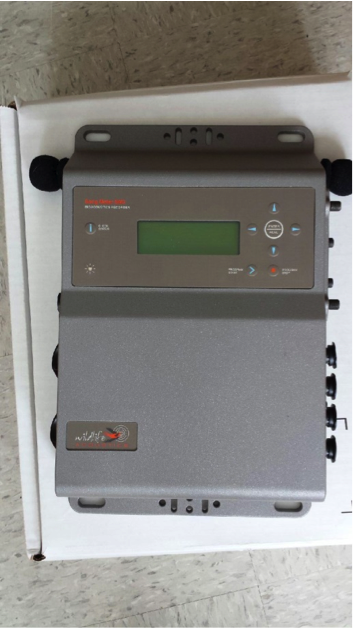Our group has been working and coordinating efforts to record bird calls at night over Grounds. This information will give us an insight into bird migrations at night and what birds are flying over the University of Virginia.
This device is the Song Meter SM3 that I used to record the sounds/calls of birds at night. It is a reliable solution for the periodic, seasonal, or ongoing long-term acoustic monitoring of birds, frogs, and other wildlife in any field conditions. You can program the device to record when you want and as long as you need.

The Song Meter SM3 has the battery life and memory capacity to record for hundreds of hours and can be used outdoors for extended durations. The owner’s manual even says that it is the most technologically advanced bioacoustics recorder on the market! I found the device relatively easy to use as well and it even recorded the sounds and calls of birds that I could not even hear myself! It makes the unknown and mysterious sky visible! All you have to do is insert an SD memory card into the storage compartment and on the main screen you click (Programs>Load Program) and then you pick whether to record for 30 minutes, 24 hours, 3 hours after Dusk, or 3 hours after Dawn. Then after you have loaded the program and chosen your calibration, hit the PROGRAM START button! When you are done hit PROGRAM STOP and then click the EXPORT PROGRAM button in order to retrieve the data onto the memory card.
My Research:
I began using the Song Meter SM3 to monitor birds from the night of Friday, April 4, 2014 to the night of Monday, April 7, 2014. I decided to set the recording acoustics to 3 hours after dusk and record for a few hours. Not only did I hear many bird calls myself, but the Song Meter SM3 was able to record bird calls that I was unable to hear. I conducted my recordings within the vicinity of Brandon Avenue via Gibson Hall and Bice Apartments. After the recordings and exporting the program onto my memory card, all I had to do was insert the memory card into my PC and view and hear the recordings on Windows Media Player.
Whose Call Was That?
The two most frequent calls that I heard through these nights came from a flock of migratory birds such as the Canadian Geese and Palm Warblers. To verify my findings and what I heard I used various sites that played the recordings and sounds of these two bird species. Below is the link to the Palm Warbler: http://www.youtube.com/watch?v=phYRUm12Uk8

The Palm Warbler is a small, song migratory bird that has a brownish back, chestnut cap, a bright yellow under-tail who constantly wags its tail. Its underparts are a yellowish coloring. The Cornell Lab of Ornithology via “All About Birds” gives information about the identification, life history, sounds, and geographic range and migration patterns and maps about the Palm Warbler found at:
http://www.allaboutbirds.org/guide/palm_warbler/id
In order to verify that this was the culprit that I heard I found the Virginia Bird Migration Data and website very helpful. The following table was found at http://www.birdnature.com/spvi.html
|
Virginia Spring Migration |
|||||
|
County |
City |
Approximate |
Approximate |
Common Name |
Scientific Name |
|
Albermarle |
Charlottesville | April 22 | American Redstart | Setophaga ruticilla | |
| May 28 | Bay-breasted Warbler | Dendroica castanea | |||
| May 22 | Black-throated Blue Warbler | Dendroica caerulescens | |||
| May 28 | Blackburnian Warbler | Dendroica fusca | |||
| May 3 | Canada Warbler | Wilsonia canadensis | |||
| April 13 | Cerulean Warbler | Dendroica cerulea | |||
| May 23 | Chestnut-sided Warbler | Dendroica pensylvanica | |||
| May 1 | Lark Sparrow | Chondestes grammacus | |||
| March 27 | May 31 | Palm Warbler | Dendroica palmarum | ||
| May 4 | Wilson’s Warbler | Wilsonia pusilla | |||
Based on this data, I was in the “prime time” of hearing the Palm Warbler.
The other calls that I heard came from a flock of migratory, waterfowls such as the Canadian Geese. Canadian geese are big water birds that have a long neck, a large body, large webbed feet and a wide, flat bill. They have a black head with white cheeks and chinstrap, black necks, and a tan breast. They are often seen in flight moving in pairs or flocks and can be seen forming a V-formation. They are found just about anywhere in the country. The sounds of these birds can be heard at the following site: http://www.youtube.com/watch?v=YkQOzyjjRwU

There is also interesting information about UVA’s local bird watchers such as the Monticello Bird Club that has a “Birder’s Guide to Charlottesville, Virginia and Vicinity” pamphlet found at:
Post by Justin D. Midkiff, Third-Year, American Politics